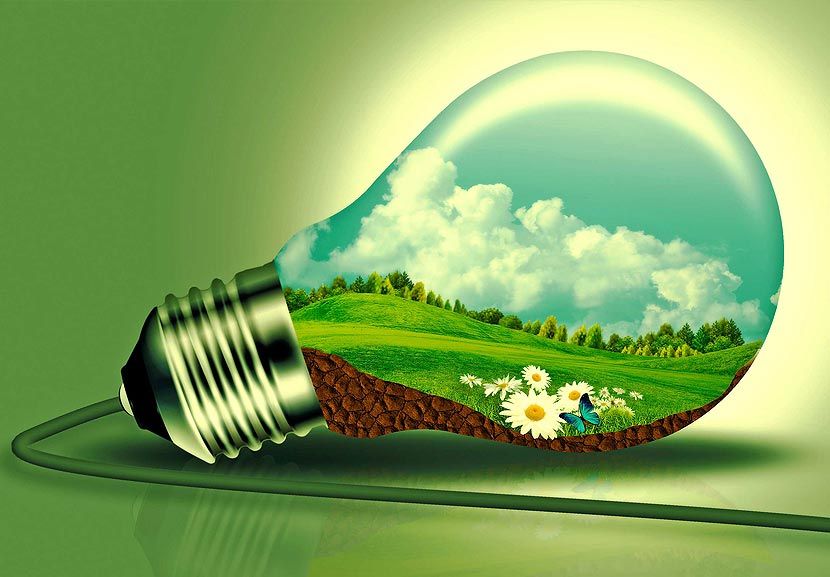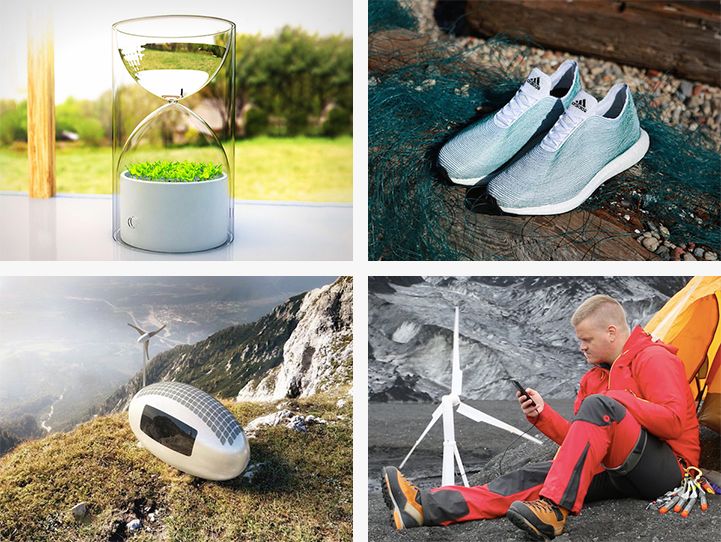Greening Our Future: Sustainable Tech Innovations
The relentless march of technological progress has undoubtedly reshaped our world, bringing unprecedented convenience, connectivity, and capability. However, this advancement has often come at a significant environmental cost, contributing to resource depletion, pollution, and climate change. The good news is that a powerful counter-movement is gaining momentum: sustainable technology. This paradigm shift focuses on developing innovations that meet our current needs without compromising the ability of future generations to meet their own. It’s about designing, producing, and utilizing technology in a way that minimizes environmental impact, conserves resources, and promotes ecological balance.
This article delves deep into the fascinating world of sustainable tech, exploring its diverse facets, groundbreaking innovations, and the profound impact it’s having on various sectors. We’ll examine how these eco-friendly advancements are not just theoretical concepts but tangible solutions actively shaping a greener, more resilient future for our planet.
The Imperative for Sustainable Technology
The urgency for sustainable technology stems from a clear understanding of the environmental challenges we face. Our current linear economic model, often described as “take, make, dispose,” is inherently unsustainable. It relies on extracting finite resources, manufacturing products, and then discarding them, leading to massive waste generation and pollution.
Consider the alarming statistics: global e-waste generation is projected to reach 74 million metric tons by 2030, a staggering figure that highlights the need for more responsible electronics production and disposal. Furthermore, the energy consumption of data centers, vital for our digital lives, continues to soar, contributing significantly to greenhouse gas emissions. These are just a few examples that underscore why a shift towards sustainability in technology is not merely an option but a critical necessity.
Sustainable technology offers a vital pathway to mitigate these issues. By embracing principles of circularity, resource efficiency, renewable energy integration, and waste reduction, it aims to create a harmonious relationship between human innovation and planetary well-being. This involves a fundamental rethinking of how we design, produce, use, and ultimately dispose of technological products and services.
Pillars of Sustainable Technology
Sustainable technology isn’t a singular concept but a multifaceted approach built upon several core principles:
A. Renewable Energy Integration
At the heart of sustainable technology lies the widespread adoption and integration of renewable energy sources. This means powering our homes, industries, and transportation systems with clean, inexhaustible sources like solar, wind, hydro, geothermal, and biomass.
- Solar Power Advancements: Beyond traditional rooftop panels, innovations include perovskite solar cells offering higher efficiency and flexibility, transparent solar cells for integration into windows and building facades, and floating solar farms maximizing energy generation on water bodies. These advancements make solar energy more accessible, versatile, and aesthetically pleasing.
- Wind Energy Evolution: Wind turbines are becoming larger, more efficient, and designed for diverse environments, including offshore wind farms that harness powerful oceanic winds. Innovations in blade design, materials, and smart control systems are maximizing energy capture and minimizing environmental impact.
- Energy Storage Solutions: The intermittency of some renewable sources necessitates robust energy storage. Advanced battery technologies (e.g., solid-state, flow batteries), hydrogen fuel cells, and pumped-hydro storage are crucial for ensuring a consistent and reliable supply of clean energy, enabling grids to run entirely on renewables.
B. Circular Economy Principles
Moving away from the linear “take, make, dispose” model, sustainable technology champions the principles of a circular economy. This involves keeping resources in use for as long as possible, extracting the maximum value from them while in use, and then recovering and regenerating products and materials at the end of their service life.
- Design for Longevity and Repairability: Products are designed from the outset to be durable, upgradeable, and easily repairable, extending their lifespan and reducing the frequency of replacement. This involves modular designs and readily available spare parts.
- Material Efficiency and Substitution: Minimizing the use of virgin resources by employing recycled, renewable, or responsibly sourced materials. This includes using bioplastics, recycled metals, and sustainable timber.
- Waste Reduction and Resource Recovery: Implementing advanced recycling technologies for complex materials like e-waste, promoting take-back schemes, and developing innovative methods for recovering valuable resources from waste streams. This also encompasses reducing packaging and promoting refillable systems.
- Product-as-a-Service Models: Shifting from ownership to access, where companies retain ownership of products and provide them as a service. This incentivizes manufacturers to design for durability and ease of maintenance, as they are responsible for the product’s entire lifecycle. Examples include leased electronics or subscription-based appliance services.
C. Resource Efficiency and Optimization
Sustainable technology focuses on doing more with less, optimizing resource utilization across all stages of a product’s lifecycle.
- Energy-Efficient Computing: Developing low-power processors, optimizing software for reduced energy consumption, and implementing liquid cooling systems in data centers to significantly cut down on energy demand and associated carbon emissions. Edge computing, by processing data closer to its source, also reduces the energy required for data transmission.
- Smart Grids and Energy Management: Utilizing artificial intelligence (AI) and Internet of Things (IoT) to optimize energy distribution, predict demand, and integrate renewable sources seamlessly into the power grid. Smart meters empower consumers to monitor and manage their energy consumption more effectively.
- Water Conservation Technologies: Innovations in water recycling, efficient irrigation systems (e.g., drip irrigation), and smart leak detection in infrastructure significantly reduce water wastage, a critical concern in many regions facing water scarcity.
- Sustainable Manufacturing Processes: Employing techniques that minimize waste, reduce energy consumption, and eliminate hazardous chemicals in the production of goods. This includes additive manufacturing (3D printing), which can reduce material waste, and green chemistry principles in chemical production.
D. Pollution Control and Remediation
Beyond preventing pollution, sustainable technology also offers solutions for cleaning up existing environmental damage.
- Carbon Capture, Utilization, and Storage (CCUS): Technologies that capture carbon dioxide emissions directly from industrial sources or the atmosphere, preventing them from entering the atmosphere. This captured carbon can then be stored underground or even utilized to create new products.
- Wastewater Treatment Advancements: Developing more efficient and less energy-intensive methods for treating industrial and municipal wastewater, removing pollutants and sometimes even recovering valuable resources.
- Bioremediation: Utilizing biological agents, such as microorganisms or plants, to break down or remove pollutants from contaminated soil or water.
- Air Purification Technologies: Innovations in air filtration systems for both indoor and outdoor environments, designed to remove particulate matter and harmful gases.
Innovations Across Sectors
Sustainable technology is not confined to a single industry; it’s a transformative force impacting virtually every sector of our economy and daily lives.
A. Smart Cities and Sustainable Urbanization
As global populations increasingly concentrate in urban areas, smart city initiatives are leveraging technology to create more livable, efficient, and environmentally friendly cities.
- Intelligent Transportation Systems: Optimizing traffic flow, promoting public transportation, and encouraging electric vehicle (EV) adoption through charging infrastructure. This includes smart traffic lights, autonomous public transport, and ride-sharing platforms that reduce individual car dependency.
- Green Buildings: Designing and constructing buildings that minimize environmental impact throughout their lifecycle. This involves passive design principles (natural ventilation, daylighting), renewable energy integration (rooftop solar), rainwater harvesting, and the use of sustainable building materials.
- Smart Waste Management: Using IoT sensors to monitor waste levels in bins, optimizing collection routes, and encouraging recycling through incentives and smart sorting systems. This reduces fuel consumption for waste collection and increases recycling rates.
- Urban Green Spaces and Vertical Farms: Integrating more green infrastructure into urban environments, including rooftop gardens, vertical farms, and community gardens. These initiatives improve air quality, reduce the urban heat island effect, and provide local food sources, minimizing transportation emissions.
B. Agriculture and Food Systems
Technology is playing a crucial role in making food production more sustainable, addressing issues of resource intensity, waste, and food security.
- Precision Agriculture: Using drones, sensors, and AI to monitor crop health, soil conditions, and pest infestations, allowing farmers to apply water, fertilizers, and pesticides more precisely, reducing waste and environmental runoff.
- Vertical Farming and Controlled Environment Agriculture (CEA): Growing crops indoors in stacked layers, often using hydroponics or aeroponics, minimizing land and water use, eliminating pesticides, and enabling year-round local production regardless of climate.
- Alternative Proteins: Developing sustainable protein sources like plant-based meats, cultured meat, and insect-based proteins that have a significantly lower environmental footprint than traditional livestock farming.
- Food Waste Reduction Technologies: Innovations in food preservation, smart packaging that extends shelf life, and platforms that connect surplus food with those in need, all aimed at minimizing the estimated one-third of global food production that is wasted.
C. Manufacturing and Industry
The industrial sector, a major consumer of resources and energy, is undergoing a transformation towards more sustainable practices.
- Industry 4.0 for Sustainability: Leveraging technologies like IoT, AI, and big data analytics to optimize production processes, predict equipment failures, reduce energy consumption, and minimize waste in factories. This includes predictive maintenance and real-time resource monitoring.
- Additive Manufacturing (3D Printing): Enables the creation of complex parts with less material waste, on-demand production reducing inventory, and the ability to use recycled and bio-based filaments.
- Green Materials Science: Research and development into new materials that are bio-degradable, recyclable, self-healing, or derived from renewable resources, reducing reliance on finite and polluting substances. Examples include mycelium-based packaging and algae-based fuels.
- Industrial Symbiosis: Creating networks where the waste products of one industry become the raw materials for another, mimicking natural ecosystems and fostering a highly efficient use of resources.
D. Energy and Grid Modernization
Beyond renewable energy generation, sustainable tech is revolutionizing how we manage and distribute power.
- Smart Grids with Distributed Energy Resources: Integrating decentralized energy sources like rooftop solar and small wind turbines into a responsive and resilient grid, allowing for two-way flow of energy and information.
- Demand Response Systems: Technologies that incentivize consumers to reduce or shift their energy consumption during peak demand periods, helping to balance the grid and reduce the need for peaking power plants.
- Vehicle-to-Grid (V2G) Technology: Enabling electric vehicles to not only draw power from the grid but also feed stored energy back into it during times of high demand, essentially turning EVs into mobile energy storage units.
- Advanced Metering Infrastructure (AMI): Smart meters that provide real-time data on energy consumption, enabling both utilities and consumers to make more informed decisions about energy use.
The Role of AI, IoT, and Big Data
Artificial intelligence, the Internet of Things, and big data analytics are not just buzzwords; they are critical enablers of sustainable technology, providing the intelligence and connectivity needed to optimize processes and make informed decisions.
- AI for Optimization: AI algorithms can analyze vast datasets to identify patterns, predict outcomes, and optimize complex systems. In sustainable tech, this translates to optimizing energy grids, predicting weather patterns for renewable energy generation, designing more efficient materials, and even identifying inefficiencies in supply chains.
- IoT for Data Collection and Control: Billions of interconnected devices collect real-time data from various environments – smart homes, factories, farms, and cities. This data feeds into AI systems, allowing for precise monitoring, automated control, and immediate responses to changing conditions, such as adjusting irrigation based on real-time soil moisture or dimming lights based on occupancy.
- Big Data Analytics for Insights: The immense volume of data generated by IoT devices and other sources is analyzed to derive actionable insights. This helps in understanding consumption patterns, identifying areas for resource reduction, predicting environmental impacts, and informing policy decisions for sustainable development. For instance, analyzing smart meter data can reveal peak energy usage times, allowing for targeted demand-side management programs.
Together, these technologies create a powerful feedback loop: IoT collects data, big data analytics processes it, and AI uses the insights to optimize and automate processes, leading to significant environmental benefits and resource savings.
Challenges and Opportunities Ahead
While the promise of sustainable technology is immense, its widespread adoption faces several challenges:
- High Upfront Costs: Many sustainable technologies, while offering long-term savings, can have significant initial investment costs, which can be a barrier for individuals and businesses.
- Scalability Issues: Transitioning from pilot projects to large-scale deployment requires robust infrastructure, supply chains, and regulatory frameworks.
- Policy and Regulatory Support: Effective government policies, incentives, and regulations are crucial to accelerate the development and adoption of sustainable technologies. This includes carbon pricing, subsidies for renewables, and stricter environmental standards.
- Public Awareness and Acceptance: Educating the public about the benefits of sustainable technologies and overcoming resistance to change are vital for widespread adoption.
- Technological Integration Complexity: Integrating diverse sustainable technologies into existing infrastructure and systems can be complex and require careful planning and execution.
Despite these challenges, the opportunities presented by sustainable technology are even greater. It represents not just an environmental imperative but also a massive economic opportunity, driving innovation, creating new jobs, and fostering resilient economies. The growing consumer demand for eco-friendly products and services, coupled with increasing investor interest in ESG (Environmental, Social, and Governance) criteria, is further accelerating this transition.
The Path Forward: Collective Action
Achieving a truly sustainable future powered by eco-friendly innovations requires a concerted effort from all stakeholders:
- Governments: Must establish clear policies, provide incentives, invest in research and development, and create regulatory frameworks that support sustainable tech.
- Businesses: Need to embrace sustainable practices in their operations, invest in green technologies, and design products with environmental impact in mind. This includes adopting circular economy principles and transparent reporting on their environmental performance.
- Researchers and Innovators: Play a crucial role in developing breakthrough technologies, improving existing ones, and finding novel solutions to environmental challenges.
- Individuals: Have the power to make conscious choices as consumers, demanding sustainable products, reducing their own environmental footprint, and advocating for change.
By fostering collaboration, sharing knowledge, and making sustained investments, we can collectively accelerate the transition to a world where technology serves as a powerful force for environmental good, ensuring a healthy and prosperous planet for generations to come. The innovations discussed in this article are just the beginning; the potential for sustainable technology to reshape our future is truly limitless.














